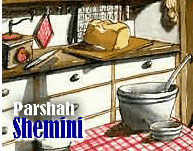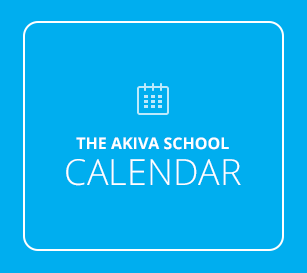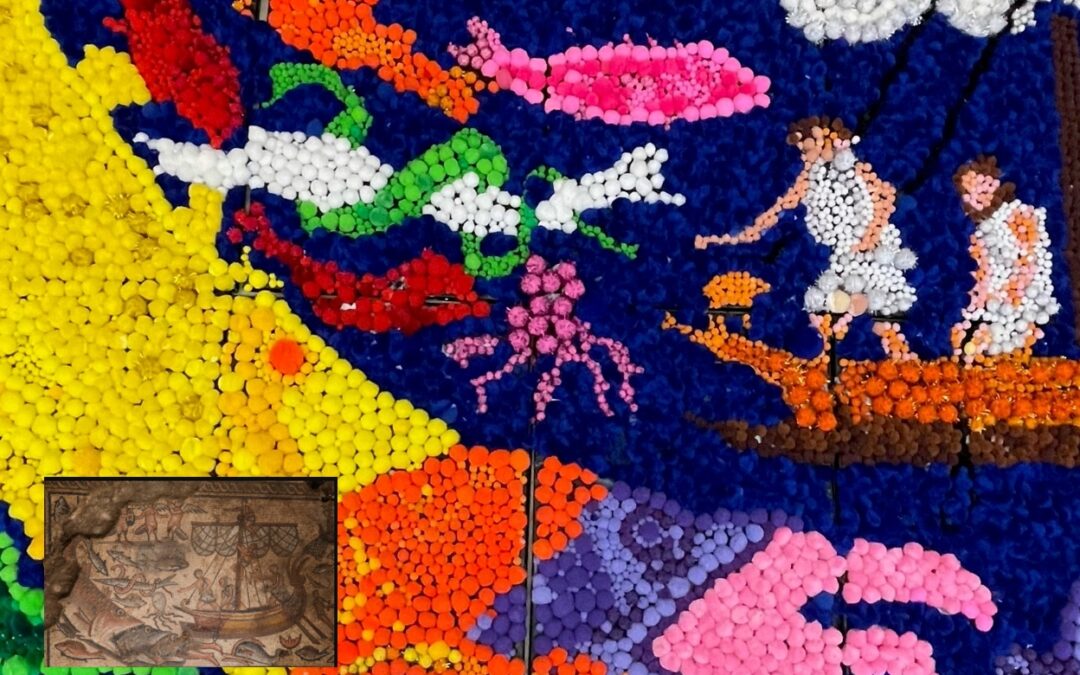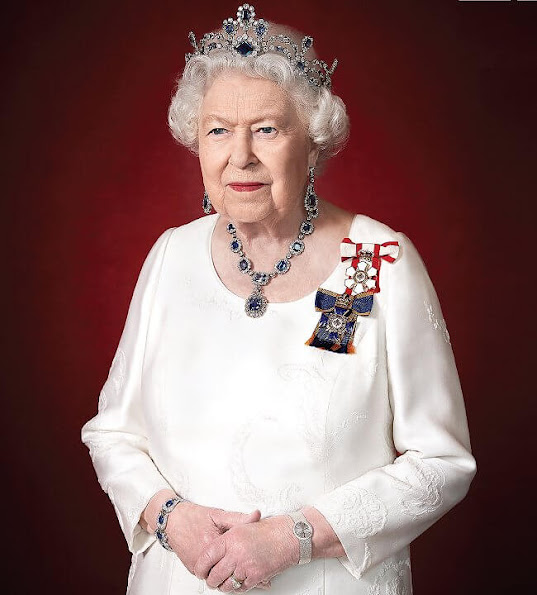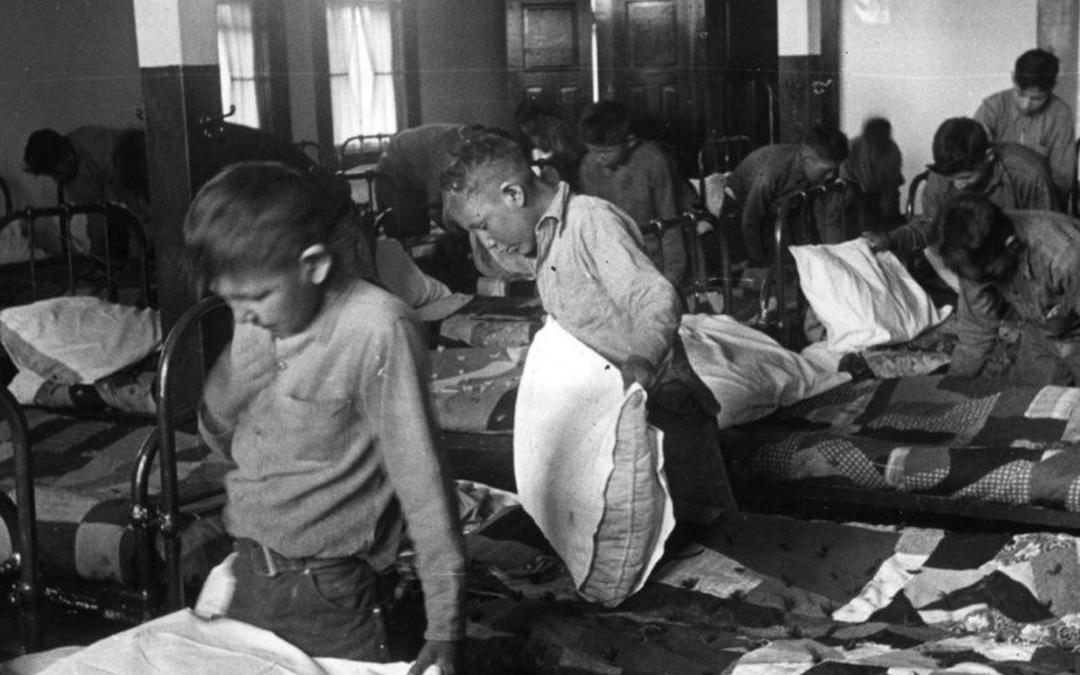This week’s parashah, Sh’mini, consists of three distinct parts that do not appear, on the surface, to relate directly to one to another. Let’s begin by looking at a summary of each of these parts.
The first section of this portion appears to be a continuation of the previous two parashiyot. Vayikraand Tzav, deal in great detail with how the various sacrifices were to be offered at the Tabernacle (and later, the Temple), and end with a description of the dedication of the Tabernacle and the ordination of the priests (kohanim). Sh’mini opens on the eighth day of the ordination ceremony. Moses instructs Aaron and his sons to bring specific animals for a burnt offering (olah), a sin offering (chatat), an offering of well-being (zevach sh’lamim), and a meal offering (minchah), to atone for any sins they or the people may have committed.
Suddenly in the next section, the “documentary-style” description we have gotten used to in Leviticus changes to a narrative style as we are told:
Now Aaron’s sons Nadab and Abihu each took his fire pan, put fire in it, and laid incense on it; and they offered before the Eternal alien fire, which had not been enjoined upon them. And fire came forth from the Eternal and consumed them; thus they died at the instance of the Eternal (Leviticus 10:1-2).
Following this incident, Aaron, whose sons had just perished, is totally silent, and Moses insists that the ceremony be completed as planned.
This difficult, painful, and confusing passage has captured the attention of commentators from the earliest times until today. There are literally scores of interpretations offered in an effort to make sense of this ethically problematic story.1
In the third part of this parashah, the subject abruptly changes as Moses and Aaron hear a detailed cataloging of the laws of kashrut – the dietary laws – directly from God. They are told that from among “land animals” they may eat any animal “that has true hoofs, with clefts through the hoofs, and that chews the cud” (11:2-3). This is followed by a listing of animals that may cause confusion (for example, the camel, the hare, and the swine) because they either have cloven hooves or chew their cud, but not both. They are labeled “impure.”
Next Aaron and Moses learn that “. . . anything in water, whether in the seas or in the streams, that has fins and scales – these you may eat” (11:9), but any water creatures with no fins and scales “are an abomination for you” (11:10). Finally, an extensive list is provided telling Moses and Aaron which specific birds may not be eaten (11:13-19) and which insects, “winged swarming things that walk on all fours,” may be eaten (11:21-22).
Now that we have looked at brief summaries of the sections, we must ask, do they belong together stylistically or in terms of content? Is their juxtaposition simply a coincidence, a random decision of an editor (human or divine!)? Or is there something meaningful about their placement in this parashah?
To try to understand this, let’s look at one commentary on the “Nadab and Abihu” vignette. Unlike many of the more traditional explanations and commentaries on this story, according to the eighteenth century Hebrew scholar, poet, and educator Naphtali Herz Wessely2, Nadab and Abihu were not arrogant, self-absorbed, or envious of the position of their elders (Moses and Aaron). They were actually exceedingly “religious,” enamored of the beauty of the sacrifices, and simply lost control due to their enthusiasm and joy. They got carried away and went beyond the scope of what was acceptable to God.
This view helps us look at the three contrasting sections of this parashah through a useful metaphor: that of a sandwich. The tantalizingly tasty filling of the sandwich is represented by the middle section of the parashah – the zealousness of Nadab and Abihu and their unbridled fervor. Representing the two pieces of bread are the highly ritualized, structured, and inflexible ways in which sacrifices are meant to be offered, and the equally rigid dietary laws.
As with any sandwich, the bread envelops and covers over (protects!) the filling. The bread, which is usually far less flavorful than the filling, provides contrast to the stronger essences of the filling. It inhibits the filling, so the most-pronounced flavors are not totally overpowering.
With this metaphor, we can look at our difficult Torah portion in a more holistic way: just like the filling in a sandwich, enthusiasm, unrestrained joy, and zealousness can be wonderful, but they can also cause us to lose perspective. Therefore, it takes the consistency of the bread – the rituals and the rules – to contain the filling in such a way that it tastes better and we can enjoy it longer.
This parashah comes to teach us that in life we must not let go of our passions. We must celebrate and revel in our joy and enthusiasm for what matters deeply to us. But, at the same time, we also must ground ourselves in the constancy of family and community, traditions and standards. If we do, I submit that the sandwich of our lives may well taste sweeter and be more satisfying than we can even imagine!
- For a very accessible summary of a number of these interpretations see, H. J. Fields, A Torah Commentary for our Times, Volume Two: Exodus and Leviticus (New York: UAHC Press, 1991) pp. 113-115.
- Among Wessely’s many publications, his commentary (Biur) on the Book of Leviticus appeared as part of Netivot ha-Shalom, a controversial German translation of the Torah compiled by Moses Mendelssohn.
Robert Tornberg, RJE, is a Jewish educator with nearly forty years of experience in synagogue schools, day schools and as the Education Director of DeLeT at Hebrew Union College-Jewish Institute of Religion. Currently completing the dissertation for his Ph.D. in educational administration and program evaluation, he plans to develop an independent consulting practice focusing on program evaluation and professional development for Jewish schools, synagogues, and other organizations.

